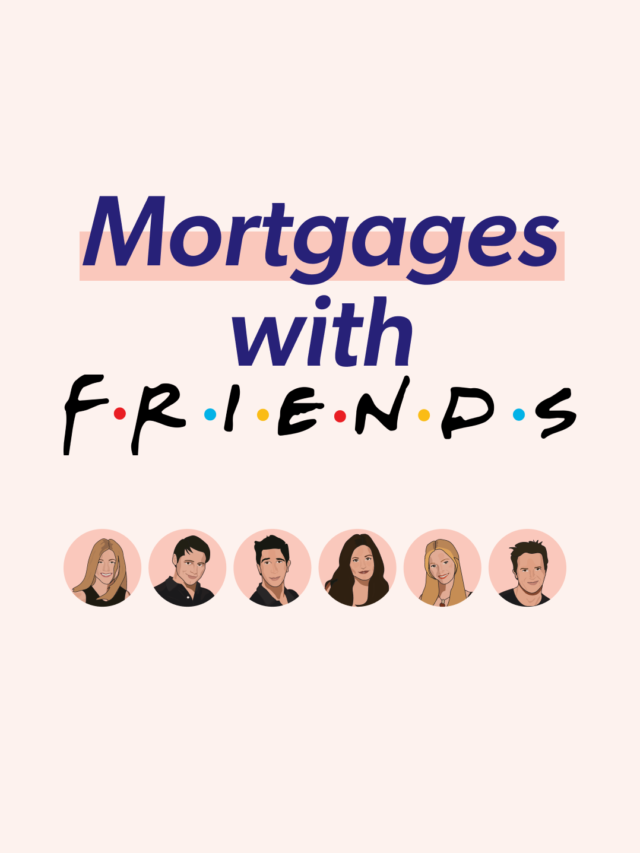Free mortgage advice and financing tips from the top lending team in Los Angeles.
Helping first time home buyers with financing since 2002.
Mortgage Blog Categories:
Los Angeles
Real Estate
Mortgage Tips
Home Tips
Fun
Let’s take a look at millennials’ financial history
There’s no way around it: you have to build a budget
How much should millennials plan to spend on a home?
What if you fail the 28% rule of thumb test?
What about if you don’t have enough for a down payment?
What else should millennial homebuyers know?
Best Apps for Remote Working
Remote Project Management Challenges and Solutions
Training Remote Employees
Best Remote Team Building Activities
What to consider when building an ADU
Financial Advice from Family and Friends is Free
Truth Time
Reality Check Your Dream House
Options for Making Your Dream Home a Reality
Six Mortgage Types and Their Corresponding ‘Friends’ Character

Millions of people tuned in to one of the most popular sitcoms for a decade, “Friends.” Living in a cramped West Village New York City apartment on top of one other makes me wonder, why didn’t they purchase places of their own? (Ok, I know…Monica and Chandler finally did in the last ep, but still, it took them that long?!)
It got me thinking — what sort of loan would the “Friends” qualify for, or suit their lifestyle best? Let’s take a fun, entertaining deep dive into the types of mortgages available.
The Rachel Green
The Rachel Green, or the conventional loan, is like the girl next door. The closest you can get to a standardized mortgage. The conventional loan is the most popular and common type of mortgage offered by lenders (Like Aragon Lending 😉 ) These loans are sold on the secondary mortgage market by Fannie Mae and Freddie Mac to free up money so more people can take out loans to buy houses.
Conventional loans are often the best option for borrowers with stable job histories, a minimum credit score of 620, a 5% down payment, and a debt-to-income ratio of less than 45%. There is a loan max amount tied to this type of loan, but it changes based on location so be sure to check what the limitations are in the area you want to buy in.
If you choose to put less than 20% down or cannot afford to, you will be asked to pay for private mortgage insurance. This insurance is for lender protection if you default on your payments and the home goes into foreclosure. Putting less than 20% down deems you a higher-risk borrower. Private mortgage insurance adds an additional amount on top of your mortgage payment.
The good news is, just like our “Runaway Bride” who couldn’t commit, she finally does when she has a child. It’s no different for the banks. Once you have met that 20% equity threshold, the bank is now ready to eliminate this PMI penalty fee and commit to you.
Conventional loans are used for a primary residence, second home, or investment property.
In obscene markets like the “Friends” West Village apartment, the maximum threshold amount can be slightly higher but not enough to afford a 1-bedroom apartment. (Sigh, guess that explains the roommates, right?!)
Thus, most loans originated in the Manhattan marketplace are non-conforming jumbo loans. This leads me to…
Jumbo Joey
Jumbo Joey finally hit it big after years as a struggling actor and was able to buy a place. Jumbo loans require a minimum of 20% down. With his colossal windfall, he could pay down all his debts, bring his credit scores up to 700-720, bring his debt-to-income ratio to well below the hard cap of 45%, and borrow an amount well above the Fannie Mae and Freddie Mac conforming guidelines of $548,250.
These loans require the borrower to show the lender that they have enough cash on hand to cover payments for a few months if shit hits the fan at least a year in mortgage payments. I mean, Joey could afford it with that soap money in his heyday, right?
What if you don’t have that soap money coming in though?
Reliable Ross
Reliable Ross is steady, slow, and purposeful, just like the FHA loans offered by the Federal Housing Administration and insured by the Housing and Urban Development (HUD). Let’s be honest, for a long time, it was clear Ross was the only one in the group who had any sort of insurance, so this makes a lot of sense, right? This type of loan allows earners at every level to purchase a property — you know, the sweet spot for a paleontologist turned college professor. For this type of loan, the purchaser can put anywhere from 3.5% to 10% down. This loan’s disadvantage is that you are forced to pay a mortgage insurance premium (MIP) plus additional insurance of 1.75% on the FHA loan, but come on — you know Ross loves insurance.
What about Monica, though? We can’t forget about her…
Motivated Monica
Motivated Monica is much like an ARM or adjustable-rate mortgage. Chefs and food service workers like her are known for the complexity of their scope of work, their adaptability, and flexibility. An adjustable-rate mortgage is no different — and we all know Monica liked loved to plan for the future.
As the name connotes, the interest rates tied to these mortgages rise and fall with the marketplace rates. The good news is, interest rates have been at historic lows for decades, but that’s not a guarantee.
The one saving grace is, rates haven’t been volatile like during the Savings & Loan Crisis, which did a 6+ point hike from June 1979 to March 1980.
Adjustable-rate mortgages are great vehicles to get into a home. It offers lower interest rates for a specified amount of time because you assume the risk of interest fluctuations. The rates can decrease, enabling you to pay more into your principal. Remember, there is also always the option to refinance to something more stable when you are already in a home.
The right ARM product could help you qualify for financing and make it easier to buy when the market is hotter than Monica’s kitchen.
You know what else helps in a hot market?
Cash Chandler
Cash Chandler could this be any more straightforward?! Chandler, with his office job and practical approach, could use his nest egg to buy a house outright (I’m sure it recouped after Monica dipped into it for their wedding, right?) This means no mortgage and typically little or no contingencies. This method is good when you have cash on hand and want to move quickly. The great thing is, you can always turn around after closing and take out a mortgage. Why pay cash to begin with? It can make you more attractive to the seller because it means the sale isn’t dependent on the mortgage freeing up your cash flow.
Speaking of being free…
Peculiar Phoebe
Peculiar Phoebe is the highly specialized Non-QM. So, what are they? Non-QM loans are a fancy way to say all the people who don’t fit into the mortgage types outlined above — just like Princess Consuela Banana-Hammock. Self-employed, not a lot of taxable income to report, even tax liens? This is the mortgage type for you (and Phoebe.) You typically have to use a mortgage broker for this kind of financing because the traditional bank route doesn’t do these types, but when has Phoebe ever been conventional? Don’t worry, just like Phoebe seemed to know everyone, you now do too. (Hint — it’s my team and me.)
(I’ll Be) There For You
We are all “Friends” here, and I hope that it was clearly explained the various home loans available to you. But don’t forget, choosing the right mortgage company is just as essential and can also make or break your overall experience. Hint hint. I’m here if you have any questions, so don’t hesitate to reach out. We’re never on a break, here. 😉
Image Source: Warner Bros Television


